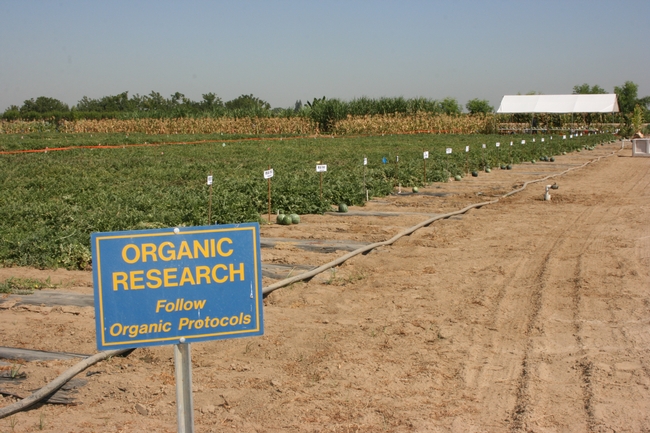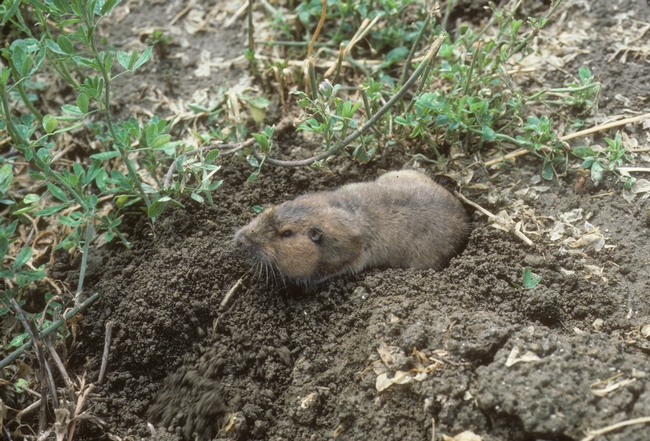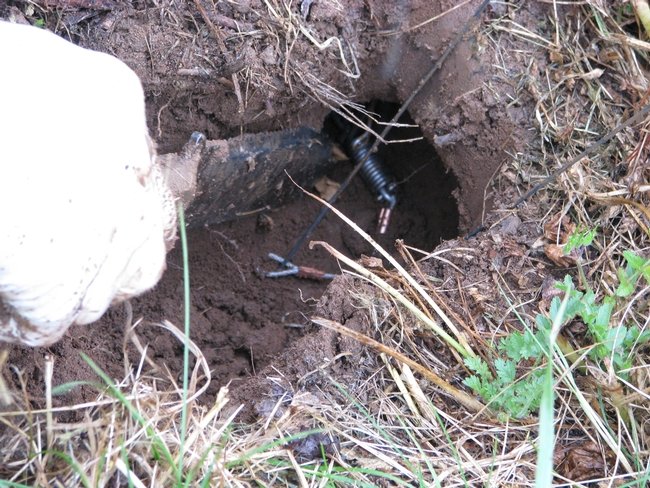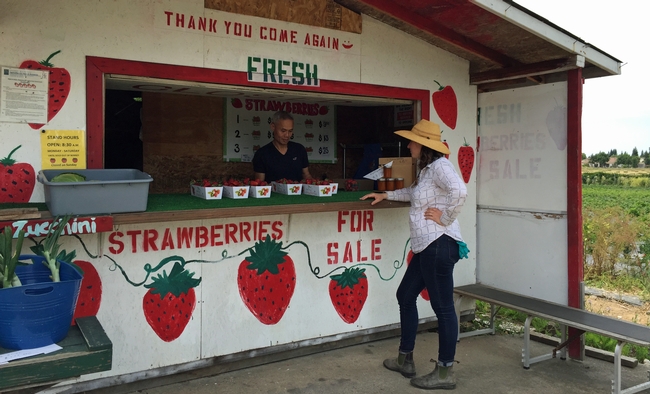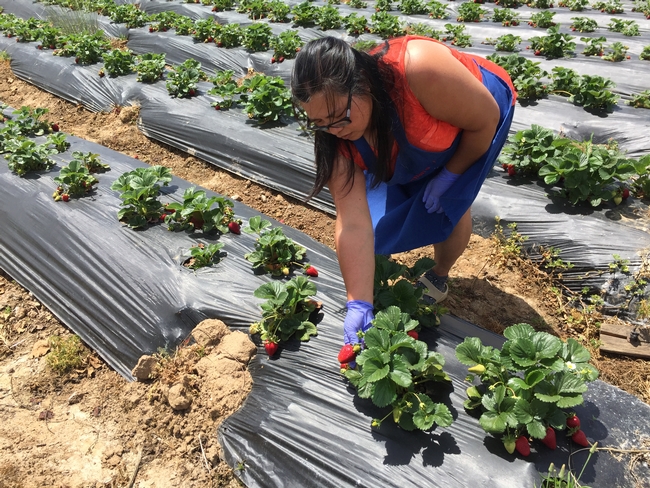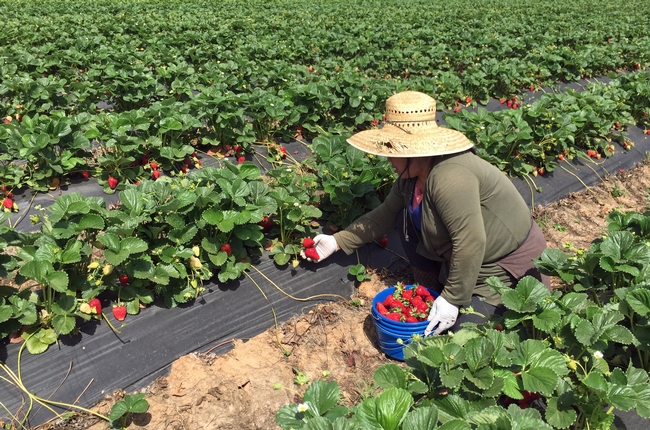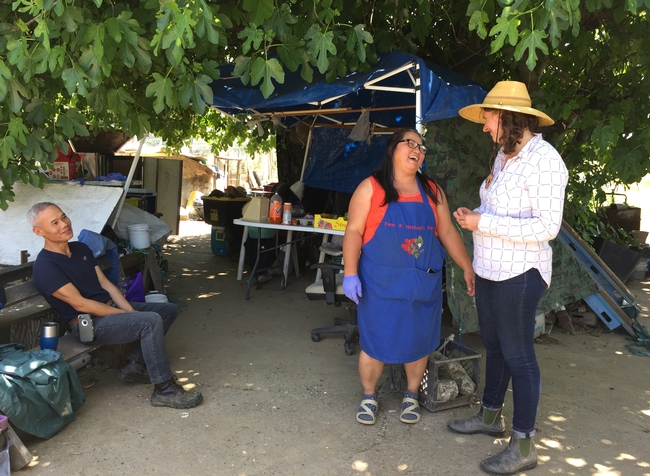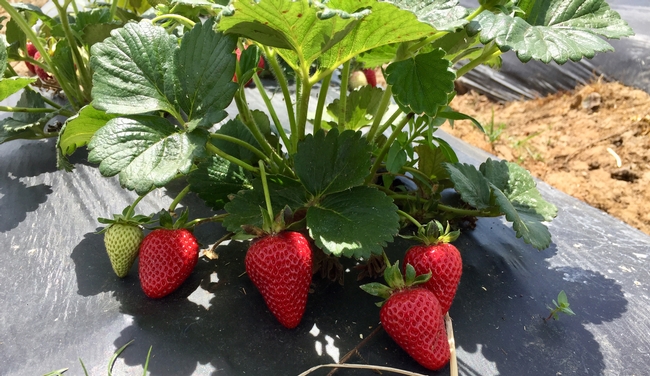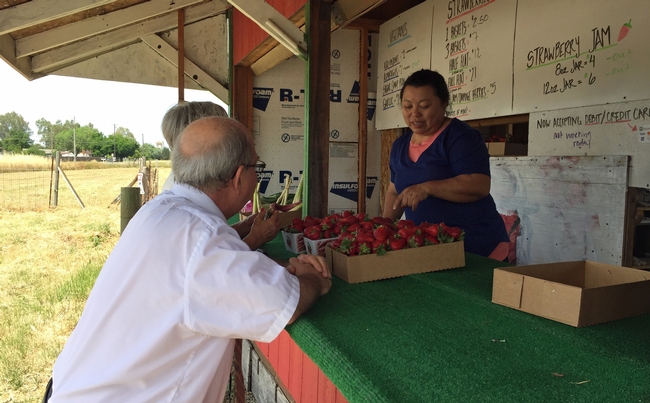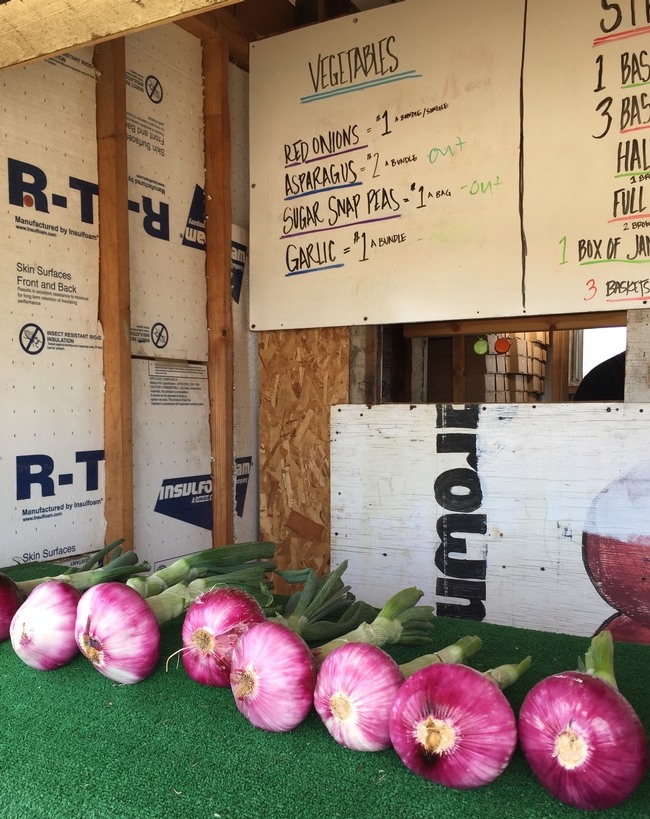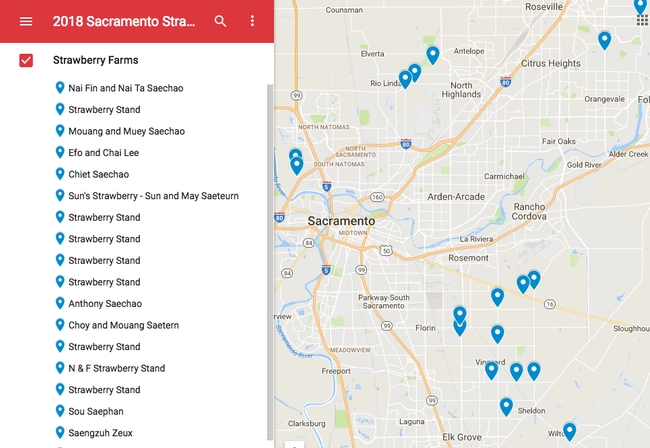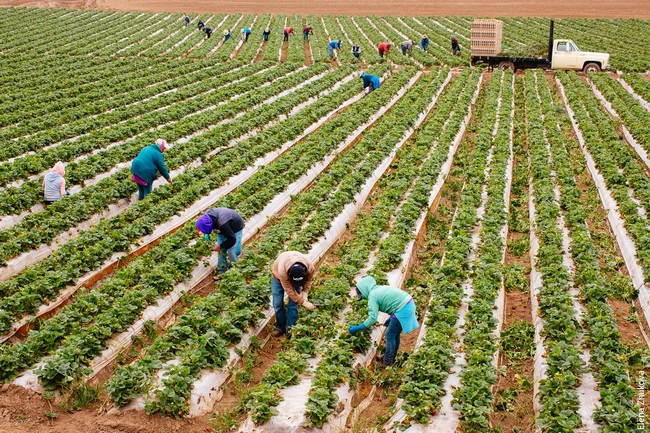Posts Tagged: Margaret Lloyd
Free weekly organic agriculture seminars for growers
Growers are invited to attend free organic agriculture seminars hosted by UC Cooperative Extension. Lunchtime seminars will be offered on Tuesdays from 12 to 1 p.m. through March 8.
The 30-minute presentations will be delivered online via Zoom, followed by questions from the listeners and general discussion. The exception is a three-hour workshop on management of Fusarium wilt and other soilborne fungal pathogens in organic systems, from 8:45 a.m. to 12:30 p.m. on Feb. 15.
Water management, weed control, grafting heirloom tomatoes, organic nitrogen management, soilborne diseases, biostimulants, biocontrol agents and mycorrhizal fungi will be discussed by UC Agriculture and Natural Resources scientists and guest speakers.
For the full schedule of presentations and speakers, visit https://bit.ly/organicagseminars. Spanish speakers can see the agenda en Español.
The Zoom link (https://ucanr.zoom.us/j/97511217168?pwd=ZWVhVXorcFEzRHUwQ0Q0L1lqaHNWdz09) for the series will be the same each week. No pre-registration is required.
The presentations will be recorded and made available at https://bit.ly/organicagseminars.
New guide helps organic growers manage burrowing rodents
Burrowing rodents can cause extensive and expensive damage to orchards and crop fields. To manage the pests without chemicals used on conventional farms, organic growers can consult a new publication from UC Agriculture and Natural Resources scientists.
“Burrowing Rodents: Developing a Management Plan for Organic Agriculture in California” outlines management within organically acceptable methods using an integrated pest management approach.
California ground squirrels, pocket gophers and meadow voles are the three most common species that cause damage. Squirrels chew on seedlings, fruit and nuts, killing young trees and reducing crop yields. In addition to plants, ground squirrels, pocket gophers and voles can chew on irrigation lines, and their burrow systems can channel water away from plants and erode the soil. The holes and mounds created by burrowing rodents pose hazards to farmworkers and farm machinery.
This publication helps growers identify the rodent species on their properties, their life cycles and tools available to control them.
“Growers can read about how to effectively select and set a range of traps for burrowing rodents,” said co-author Margaret Lloyd, UC Cooperative Extension small farms advisor for the Capitol Corridor. “Traps are an important tool for organic management, but maximizing control comes from integrating knowledge. Here we present information about rodent biology, trap efficacy, biocontrol, habitat management, plant protection and other approaches to collectively manage the pest problem.”
In the publication, Lloyd and Roger Baldwin, UC Cooperative Extension wildlife specialist in the UC Davis Department of Wildlife, Fish and Conservation Biology, review the effectiveness of commercially available traps – where to place the traps, whether to use attractants, and methods of euthanizing the animals.
They also offer cultural techniques for deterring rodents such as flooding fields and deep ripping soil to destroy burrow systems. Crops for orchard floors or cover cropping can be selected and managed to minimize habitat that protects and encourages gophers and voles.
For biological control, they suggest barn owls, raptors and snakes might be able to assist, but warn growers that predators alone will not be able to eat enough of the rodents to reduce the high populations to tolerable levels for many growers.
“Effective management will rely on a suite of tools,” said Baldwin.
The 15-page publication is available for free download at https://anrcatalog.ucanr.edu/Details.aspx?itemNo=8688.
Strawberry stands sell berries fresh from the field
Slugs, snails, ants, aphids, spider mites and inclement weather conspire against strawberry growers harvesting perfect red berries to sell.
“Farming is hard work,” said Fam Lee, as she pulled a weed from a row of strawberry plants. Lee and her husband Nathan Punh are among about 60 Mien farmers in the Sacramento area who call on Margaret Lloyd, a UC Cooperative Extension advisor, for farming advice.
“Although we are not organic farmers, we always want to go with organic,” said Lee. “For example, we have slugs and ants, I asked Margaret if it's okay to put organic slug bait around the plant as long as it doesn't touch the berry. She said that's the best way to do. We work closely with our extension staff.”
In the Sacramento area, many of the Mien-owned farms are husband and wife teams. The typical couple farms an acre or two themselves, picking berries to sell the same day at a roadside stand, which provides the family's primary source of income.
“Many of them grew up on farms in Thailand or Laos growing vegetables or growing rice or soybeans,” said Lloyd, who serves small-scale farmers in Sacramento, Solano and Yolo counties. “A lot of them come from farming backgrounds so when they came to this country, they also sought out an agrarian lifestyle.”
Some Mien growers had never seen a strawberry before arriving in California, but chose the high-value crop to maximize returns on their small plots of land.
To help Mien growers develop successful strawberry farms, Lloyd updates them on regulations and shares growing tips at an annual extension meeting, visits them at their farms, and records videos demonstrating how to do things such as using compost to fertilize the crop.
“Because of language barriers, coming out to the farm regularly is a big part of the job,” said Lloyd, who partners with staff from the National Center for Appropriate Technology (NCAT) to assist Mien farmers.
“Once we're on the farm, we can communicate in-person more easily,” she said. “Often times it involves pest identification, so I'll show them how to use a hand lens and how to identify spider mites, aphids and lygus bugs, for example.”
“A lot of them have children who speak English fluently so if they don't speak English fluently, sometimes the children come out and help.”
For the past five years, Lee and Punh have been growing and selling strawberries at a farm stand on Bond Road, between Bader and Bradshaw, in Sacramento. They grow Albion, Chandler, Santa Rosa and Seascape – sweet, delicate varieties, some of which aren't found in supermarkets because the berries don't store and ship as well. They typically begin harvesting berries at the end of March and pick through July or August, depending on the weather. This year, the first berries were ruined by spring rain and frost.
Savvy consumers will ask for certain varieties by name, Lloyd said. “Chandler is well-loved by consumers for its delicate flesh and sweet flavor. Albion produces larger berries that are also very tasty.”
Because berries sold at the roadside stands are picked fresh daily, the farmers wait until berries are perfectly ripe before picking them.
Monday through Saturday, Lee begins harvesting her strawberries by hand at the break of dawn.
“We start at 5:45, the minute we can see, and we pick until 8 o'clock. That's our goal,” Lee said. “By 8:30, we want to open our stand and we sell until all the berries run out.”
Lee's parents often drive up from Alameda to help pick berries.
To extend the farm stand season, some Mien farmers supplement the strawberries with other berries, strawberry jam and vegetables. They grow blueberries and blackberries, tomatoes, peppers and green beans and sometimes specialty vegetables such as bittermelon.
“Growing strawberries isn't easy, but it's enjoyable work,” Lee said.
Lloyd has updated a map showing locations of about 60 strawberry stands in the Sacramento area at http://bit.ly/strawberrystands.
What will California's strawberry industry do without methyl bromide?
2016 is the final year for the soil fumigant to be used in California crop fields.
For many years, California growers relied on methyl bromide to kill a wide range of soil-borne pests, from fungi to insects to weeds, before planting crops. 2016 marks the last year in which the highly effective soil fumigant will be available.
The University of California's peer-reviewed journal California Agriculture examines the impact of the methyl bromide phaseout on strawberries, California's third most valuable crop, behind only almonds and grapes, with annual farmgate sales of $2.5 billion.
First identified as an ozone-depleting compound in 1991, methyl bromide was scheduled for phaseout in the United States by 2005 under the Montreal Protocol, an international agreement to protect the stratospheric ozone layer.
While methyl bromide was used for many crops, California strawberry growers found it irreplaceable, which helped the industry win exemptions that have allowed a significant, though declining, quantity of the chemical to be used through 2016. Despite years of research into alternatives, no equally effective replacement has emerged.
Seven articles in the July-September issue of California Agriculture discuss methyl bromide alternatives and economic and production effects on the California strawberry industry.
Berry industry grows dramatically
In the first research article, UC Cooperative Extension advisors Laura Tourte and Mark Bolda and Karen Klonsky, emeritus UC Cooperative Extension economics specialist, review economic data on the berry sector — blackberries and raspberries as well as strawberries — in Santa Cruz and Monterey counties. They look ahead to factors, including water, consumer demands, labor, invasive pests, and the full phaseout of methyl bromide, that are likely to shape future growth.
Methyl iodide controversy
In a paper chronicling events leading up to the 2012 withdrawal of methyl iodide, once promoted as a viable methyl bromide substitute, Julie Guthman, UC Santa Cruz professor in the Department of Social Sciences, reports survey findings that point to a variety of reasons why strawberry growers did not move quickly to adopt the chemical after it was approved by state regulators. Concerns about public opposition topped the list, followed by a variety of other factors, including concern about methyl iodide's toxicity, and a lack of strong incentive to switch to the new chemical because of the availability of other fumigants, including methyl bromide.
Managing soilborne pests
Three articles look at new approaches to managing soilborne pests without methyl bromide.
“It now seems likely that no single measure will suffice to meet the challenge of soilborne pathogens,” write Margaret Lloyd, UC Cooperative Extension advisor, and Tom Gordon, UC Davis professor in the Department of Plant Pathology, in this issue's Outlook. “Rather, a multi-faceted approach will be required, one that integrates advances in disease resistance through breeding with closer attention to the factors that influence the survival, activity and spread of pathogen populations in soil.” They make the case for using a suite of strategies to manage soilborne pathogens — including collective action among growers to help limit the spread of pathogens between fields.
A news item on research at the UC ANR Hansen Agricultural Research and Extension Center covers ongoing research on anaerobic soil disinfestation, a chemical-free technique that is being used in a growing number of commercial fields. Project scientist Amanda Hodson and UC Davis professor Edwin Lewis, both in the Department of Entomology and Nematology, review a variety of approaches to managing for soil health — in strawberries and other crops — as a pest suppression strategy.
Other soil fumigants
Fumigants other than methyl bromide, such as chloropicrin, remain widely used in California strawberry production. Rachael Goodhue, UC Davis professor in the Department of Agricultural and Resource Economics at UC Davis, examines how increasingly stringent buffer zone requirements for chloropicrin application have an uneven impact on growers, depending on their proximity to developed land. In another article, a group of UC Cooperative Extension and U.S. Department of Agriculture scientists report on the effectiveness of several fumigants at dosages lower than the maximum label rate.
Food safety and nutrient management on the farm
The issue also includes two research papers focused on general production practices for crops. One report discusses on-farm food safety practices based on a survey of produce growers. The researchers found that practices such as exclusion fencing and vegetation clearing, which may negatively impact wildlife, remain widespread despite a lack of clear evidence that they enhance food safety. Finally, Daniel Geisseler, UC Cooperative Extension specialist in the Department of Land, Air and Water Resources at UC Davis, and Gene Miyao, UC Cooperative Extension advisor, review the use of soil testing to guide the management of soil phosphorus and potassium in California cropping systems.
To read California Agriculture, a peer-reviewed journal of research in agricultural, human and natural resources published by UC Agriculture and Natural Resources, visit http://calag.ucanr.edu. For a free subscription, sign up on the website or write to calag@ucanr.edu.
View this story in Spanish:
¿Qué hará la industria de la fresa sin el bromuro de metilo? http://ucanr.edu/sites/Spanish/noticias/?uid=6887&ds=199. Video on UCANR Spanish YouTube: California Agriculture: el bromuro de metilo en cultivos de fresa https://www.youtube.com/watch?v=5D4FwLqjaLk.
Grafting tomato transplants could improve taste and yield
Two UC Cooperative Extension advisors are conducting field research to determine whether grafting tasty tomato plants onto high-performing root stock will increase yield and disease resistance while improving tomato flavor, reported Ezra David Romero on Valley Public Radio.
Romero spoke to Scott Stoddard, the UCCE vegetable crops advisor for Madera and Merced counties, and Margaret Lloyd, the UCCE small farms advisor for Yolo, Solano and Sacramento counties.
Stoddard has planted 3,500 grafted tomato seedlings on a farm north of Madera.
“Now we got them in the field and so approximately 83 days from now, if all goes according to plan, we will be harvesting out here and we will see if we can see some yield differences,” Stoddard said.
Lloyd grafted heirloom tomato varieties onto disease-resistant roots on a quarter acre at UC Davis.
“We're kind of working at this level of finding non-chemical management tools that will help overcome these challenges so they [farmers] can continue to grow these nice heirloom varieties,” says Lloyd.
Both scientists will collect data from their trails to see whether it makes sense for growers to implement the practice on their farms. Romero reported that both agreed consumers could, in time, have a tastier, larger assortment of tomatoes to purchase at farmers markets and stores.

